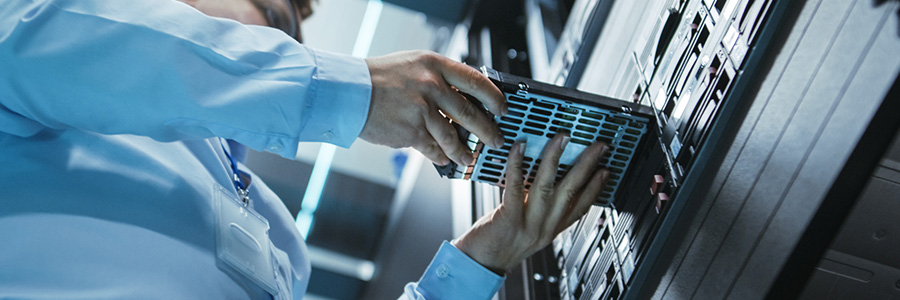Some misunderstandings can have dire consequences. For instance, some business owners mistake high availability for disaster recovery, resulting in gaping flaws in their company’s cybersecurity and increasing their risk of suffering prolonged downtime. In this article, we discuss the difference between the two so you don’t make the same mistake.
Some business owners mistake high availability for disaster recovery, resulting in gaping flaws in their company’s cybersecurity and increasing their risk of suffering prolonged downtime.
What is disaster recovery?
Disaster recovery refers to strategies or technologies that help you regain access to crucial data that your business needs to resume operations following a natural or man-made calamity. These technologies include various storage media, such as cloud or physical storage, in which backups are kept, as well as the software used to back up files.
The backups used in disaster recovery are often classified as either cold or hot backups. Cold backups are compressed copies of data and applications that are crucial to your operations, and are often stored in off-site storage media. Hot backups, on the other hand, are barely compressed file duplicates created just seconds or minutes ago while an application is running. Should you lose access to your data, you can get your business back up and running by accessing both cold and hot backups.
In terms of cybersecurity, a disaster recovery strategy is crucial to mitigating the impact of ransomware attacks, one of the worst cyberthreats today. Ransomware locks systems and files away from their users and may take up to several days to get resolved. Backups allow you to continue accessing copies of your files and remain operational even with an unresolved ransomware attack.
What is high availability?
High availability ensures that in the event that your network — or components of it — fails, your business will experience little to no downtime. The technologies that make this possible include hardware and software redundancies, such as uninterruptible power supplies (UPSs) and decomposed applications, and the hot backups used in disaster recovery.
Hardware and software can fail, sometimes even for no external reason. High availability recognizes that repairing or replacing failed systems takes time, so it makes more sense to prevent interruptions or implement redundancies that will take over failed network components. For instance, a UPS prevents disruptions during a power outage. Additionally, backup servers and hot data can take over interrupted workflows should your main server malfunction.
High availability can be valuable to cybersecurity too. Some hackers take advantage of outages to infiltrate a victim’s network. Preventing downtime or keeping it to a minimum reduces the risk of your data getting stolen or exposed.
Can disaster recovery and high availability work together?
They can and they should. Some business owners mistakenly believe disaster recovery and high availability to be synonymous with each other. While the two do overlap in some of the technologies they use, they are designed to address different problems. In particular, disaster recovery focuses on systems that are already going through downtime. High availability, on the other hand, is focused on mitigating errors before they lead to actual downtime.
These two concepts should reinforce each other to mitigate the impacts of downtime and reduce the risk of your business suffering a cyberattack. Keep in mind, however, that restoring your network and data isn’t as simple as flicking a switch. You need the assistance of IT experts to effectively back up all your essential data and network components, and restore them in the event of an outage.
Both disaster recovery and high availability are essential for preventing downtime and mitigating its negative effects. At Healthy IT, we can help you develop data recovery strategies and set up redundancies that meet your business’s needs and goals. Schedule a free consultation today.

